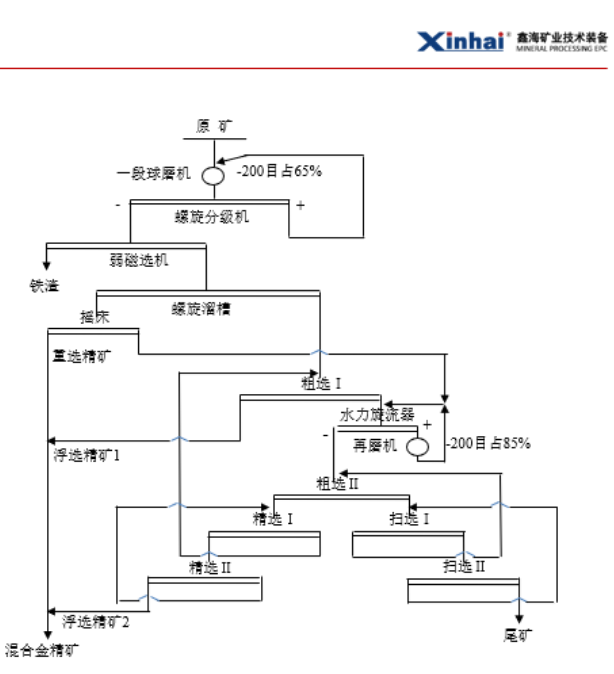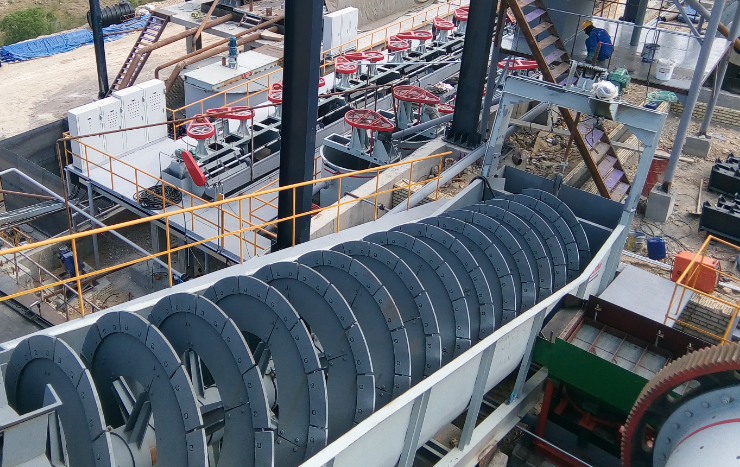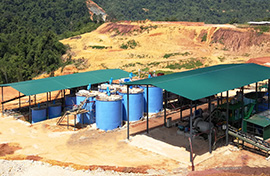-
 E-mail
guhaixin0724@gmail.com
E-mail
guhaixin0724@gmail.com
-
 Call Us
008613683147042
Call Us
008613683147042
 E-mail
guhaixin0724@gmail.com
E-mail
guhaixin0724@gmail.com
 Call Us
008613683147042
Call Us
008613683147042
 Home
Guides
Helpful Guide
How to choose Gravity Separation Equipment in Mineral Processing? (with real cases)
Home
Guides
Helpful Guide
How to choose Gravity Separation Equipment in Mineral Processing? (with real cases)
2025-03-25 Views: 921
Warm Tip: If you want to know more information, like quotation, products, solutions, etc., please Click here ,and contact us online.

Gravity separation is the "fundamental technique" in the mineral processing industry. It works by exploiting the density differences between minerals, much like shaking a gold pan—heavier gold settles at the bottom, while lighter sands float to the top. This is the simplest form of gravity separation.
Four core methods dominate industrial applications:
Jigging: Combines density stratification with pulsating water flow for rapid bulk sorting.
Dense Media Separation (DMS): Utilizes magnetite suspensions to separate minerals with subtle density differences (e.g., diamond recovery).
Centrifugal Concentration: Enhances the recovery of fine particles (<0.074 mm) via high-G forces, crucial for tailings reprocessing.
Hybrid Systems: Magnetic-gravity or flotation-gravity circuits optimize complex ores (e.g., upgrading South African chromite from 15% to 54% Cr₂O₃).
Ideal for coarse particles (5–10 mm), these devices use pulsating water flow to separate minerals such as chromite and gold, with processing capacities of 8–15 tons/hour and recovery rates of 75–85%.
Advantages: High separation efficiency, simple process, 30%-40% reduction in water consumption compared to traditional gravity separation equipment, and a 1/3 reduction in space usage.
Disadvantages: Low efficiency for very fine minerals as small particles may not settle accurately in the pulsating water flow.
Suitable for fine-grained ores (0.1–2 mm), these tables use lateral vibration and hydraulic sorting to enhance concentrate grades to 50–60% Cr₂O₃.
Advantages: Can simultaneously sort minerals of various grades, producing high-grade concentrates while discarding tailings; ore is distributed in a fan-shaped manner on the table surface for easy observation and adjustment.
Disadvantages: Large land area required, high water consumption, low throughput—standard shaking tables (4500×1830 mm) handle 0.11–2.2 t/h.
Designed for continuous processing of 0.02–1mm particles, these achieve greater than 85% efficiency in sand deposits without requiring external power.
Advantages: Compact footprint, simple structure, low production cost, energy-efficient, adaptable, and noiseless.
Disadvantages: Lower separation accuracy, particularly poor at separating flaky minerals; usage has significantly declined with the advent of jigs and vibrating screens; high device height and difficulty in adjusting parameters.
A Chinese geological mining company commissioned five testing units to perform gravity separation and flotation experiments, with the best gold recovery rate reaching only 83%. The surface oxidation and transitional minerals were of significant thickness, and while cyanidation was the optimal method for initial development, the government banned the use of sodium cyanide.

Instead of sodium cyanide, a nearly non-toxic, eco-friendly leaching agent, Cnlite, was chosen. Xinhai adopted a gravity separation + flash flotation process, producing both gravity-concentrated and flotation-concentrated gold, achieving an overall recovery rate of 90%.

This breakthrough in ore processing transformed the mine from a near "useless deposit" to a much more valuable resource. The project was recognized with a national award in that country and became a model project for the China Geological Mining Bureau under the Belt and Road Initiative.

Presence: Operating in 100+ countries/regions, serving over 2,000 mines globally.
Certifications: Xinhai holds Canadian Welding Bureau (CWB) certification, AWS Welder Qualification Certification, CE Certification and ISO Certifications; the chairman is a Fellow of the FAusIMM, a international mining consultant and a senior mineral processing engineer.
Manufacturing Capability: Xinhai's intelligent mine equipment production plant covers an area of about 110,000 m2 and can produce large-scale mine machinery such as ball mills with a diameter of less than 7 meters.
Pilot Test Center: Xinhai has a dedicated center for pilot testing which can make optimal soluthins for your mine.
Q: Can gravity separation handle ultra-fine gold (<10 μm)?
A: Yes, contact our technicion to get the equipments you need.
Q: What is the return-on-investment timeline for new gravity separation equipment?
A:
Large-Scale: 8–14 months.
Handcrafted Equipment: Less than 6 months (based on a customer survey).
The World Bank predicts that by 2050, demand for key minerals will increase by 500%. Gravity separation is not just a technique, but a strategic necessity. Welcome to consult and get Xinhai's tailored solutions for your mine.
Are you ready to upgrade your gravity circuits?
No. 188, Xinhai Street, high-tech Industrial Park, Fushan District, Yantai, Shandong, China.

Please leave your message here! We will send detail technical info and quotation to you!